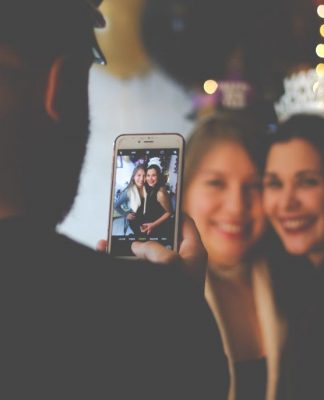Chronic Anxiety is a challenge for 18.1 percent of the US population, according to the NIMH. I’m of the opinion that most of the challenges people have with chronic anxiety are caused by what I refer to as “The Anxiety Trick.” If like millions of others you have struggled to overcome an anxiety disorder only to get disappointing results, or even feel worse over time, then you’re being fooled by the Anxiety Trick.
Anxiety, whether mild or severe, is a common occurrence, and many people mistakenly blame themselves for it. In this article, I will be discussing a way to understand this common and frustrating problem, which I have found to be helpful to people who come to me for treatment of their anxiety disorder.
You may be wondering what exactly is an anxiety disorder? The way I see it, it is simply you habitually getting tricked into experiencing powerful feelings of fear in the absence of any real danger.
Since those who suffer from anxiety disorders recognize that there is no actual danger, they may seek help for these fears. They understand that there is no sufficient rational basis for that fear, and they want to be free of the uncomfortable feelings. Of course, if someone was actually in real danger, he or she would just protect themselves as well as they could. The human brain has evolved to respond to danger, whether it be real or imagined, and responding to real danger helps to keep us safe, while responding to imagined danger may lead to an anxiety disorder.
People with anxiety disorders get afraid when they’re not in danger. Their struggle to protect themselves from fear leads them down a path of increasing risk of trouble as thoughts and actions are taken based on false perception of danger. That’s the anxiety trick.
How does this happen, that you feel fear in the absence of danger? The Anxiety Trick is at work.
How You Get Tricked
Different types of stressors can trigger an anxiety response. For example:
* If you have Panic Disorder or Agoraphobia, you keep getting tricked into believing that you’re about to die, go crazy, or lose control of yourself.
* If you have Social Phobia, you keep getting tricked into believing that you’re about to look so unreasonably nervous in front of people that you will be completely humiliated and be rejected by your community.
* If you have a Specific Phobia, you keep getting tricked into believing that you’re likely to be hurt or killed by some external object (like an elevator) or animal, or by your fear of it.
* If you have OCD, you keep getting tricked into believing that you’ve caused a terrible calamity or that one is about to befall you. You might fear that your neighborhood will burn because you left the stove on, or that your family will get poisoned because you mishandled the insecticide, or any number of intrusive thoughts may occur to you. Compulsions are behaviors that may develop around these thoughts, in order to prevent the disaster from happening.
* If you have Generalized Anxiety Disorder, you keep getting tricked into believing that you’re about to be driven mad by constant worrying, or you just have a global sense that something is wrong, or will go wrong.
In each case, the episode of fear passes without the expected catastrophe. Nothing actually happened to you, but you’re left feeling more stressed out and more worried about the next episode. The details may be the same or different next time, but it’s the same anxiety trick.
What is the Anxiety Trick?
The Anxiety Trick is this: You experience discomfort, and get fooled into treating it as if you are in real danger.
What do we do when we’re in danger? We only have three options: fight, flight, or freeze. If it looks weaker than me, I’ll fight it. If it looks stronger than me, but slower, I’ll run away. And if it looks stronger and faster than me, I’ll freeze and hope it doesn’t see so good. That’s all we have for danger.
When people experience the fear of a panic attack, or a phobic encounter, or an obsessive thought, they instinctively treat it as a danger. They try to protect themselves, with some variation of fight, flight, or freeze.
How People Get Tricked
People’s natural instincts to protect themselves are what lead them to get tricked. See if you recognize yourself in these examples, or relate to something similar:
A person with Panic Disorder gets tricked into holding her breath and fleeing the store (highway, theater, or other locale), rather than shifting to calming breaths and staying there until the feelings pass.
A person with Generalized Anxiety Disorder gets tricked into trying to stop the unwanted “what if” thoughts, rather than accepting them and taking care of present business as thoughts come and go.
A person with Social Phobia gets tricked into avoiding the party, or hiding in the corner if he attends, rather than saying hello to a stranger and seeing what happens.
A person with OCD gets tricked into repeatedly washing his hands, or returning home to check the stove, rather than accepting the intrusive thoughts of contamination and fire and returning his energies to the present activities at hand.
A person with a dog phobia gets tricked into avoiding the feelings by avoiding all dogs, rather than spending time with a dog until the feelings pass.
What Maintains the Anxiety Trick?
You might wonder why don’t people come to see this pattern of repeated episodes of fear which don’t lead to the feared outcome, and just gradually lose their fear. After all, it only seems rational to realize that something bad didn’t happen and then leave it at that. However, the Anxiety Trick is deceptive and leads one to believe that there was indeed something bad that was avoided or prevented from occurring.
What happens with people is that they may take protective steps or measures, even if it is some ritual which has no bearing on the matter, and then they conclude that based on their actions no catastrophe resulted. That is, they tend to believe that these steps “saved” them from the catastrophe. This thought reinforces the fear, as well as makes them worry more about “the next time.” It convinces them that they are terribly vulnerable and must constantly protect themselves.
The actual reason they didn’t experience a catastrophe is that in the overwhelming majority of the time, such catastrophes are not actually going to happen. These are anxiety disorders, not catastrophe disorders. People get through the experience because the reality isn’t dangerous. But it’s understandably hard for people to recognize that they were already safe at the time. They’re more likely to think they just had a “narrow escape.” This false perception or interpretation of the facts leads them to redouble their protective steps.
It’s the protective steps which actually maintain and strengthen the Anxiety Trick. If you think you just narrowly escaped a catastrophe because you had your cellular phone, or a water bottle, or because you went back and checked the stove seven times, or because you plugged in your iPod and distracted yourself with some music, then you’re going to continue to feel vulnerable. And you’re going to get more stuck in the habit of “protecting” yourself by these means.
This is how the problem gets more deeply embedded into your life. You think you’re helping yourself, but you’re actually making it worse, as your brain is being further tricked into believing the wrong thing. That’s how sneaky this Trick is.
Thus, I often find that my patients tell me, “the harder I try, the worse it gets.” If the harder you try, the worse it gets, then you would do better to evaluate what happened and your response to the situation, so that you can modify accordingly and try to reverse the process. To do so would be far more effective in actually helping yourself.
How Can You Overcome The Anxiety Trick?
The thing that makes fears and phobias so persistent is that virtually anything you do to oppose, escape, or distract from the anxious feelings and thoughts will be turned against you, and make the anxiety a more persistent part of your life.
This is where the cognitive behavioral methods of desensitization and exposure come in. Such methods help you to practice dealing with the feared situation, object or thoughts, and thereby become less sensitive to them. As you lose your fear of these anxiety symptoms through this type of practice, your symptoms will fade through the process. It does take time and concerted effort to make real progress in managing these fears effectively.
All too often, people get the idea that exposure means going to a place or situation where you’re likely to get anxious, perhaps a highway or an elevator, and take a ride without getting anxious. That’s not the point! The point is to actually go there and feel the anxiety, being sure to stay there, tolerate the feelings, and allow the anxiety to leave first, before you exit (figuratively or literally). This is what Claire Weekes called floating.
The way to disarm the Anxiety Trick is to increasingly spend time with anxiety, to expose yourself to the thoughts and sensations, and allow them to subside over time. Then you will see that you have survived, and nothing bad happened. That teaches your brain a powerful lesson and gives accurate feedback to help reverse the anxiety response.
Oftentimes, people are reluctant to attempt this process because they fear that it will be overwhelming. However, there are ways to make the experience of exposure more tolerable. If you find that you are unsure of how to manage these efforts or unable to successfully do it alone, then a licensed therapist who is trained in CBT and the treatment of anxiety can help.
Always keep in mind that exposure is practice with fear, and one needs to do ones’ best to do nothing to oppose, avoid, or distract from the fear during exposure or facing one’s fear. Over time, this leads to defeating the Anxiety Trick, as your brain sees it for the falsehood that it is, and learns to override the anxiety response that is associated with it.




















